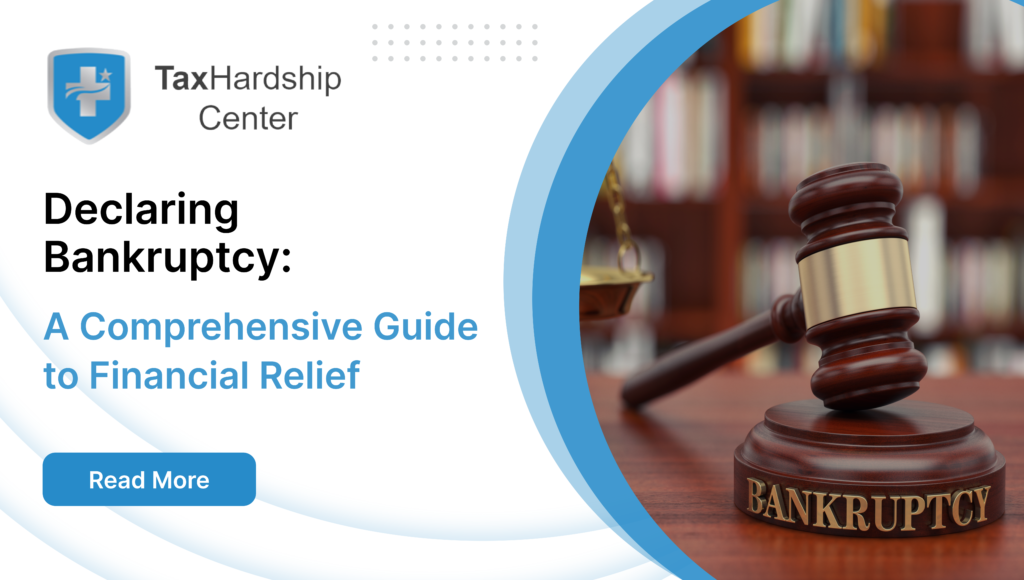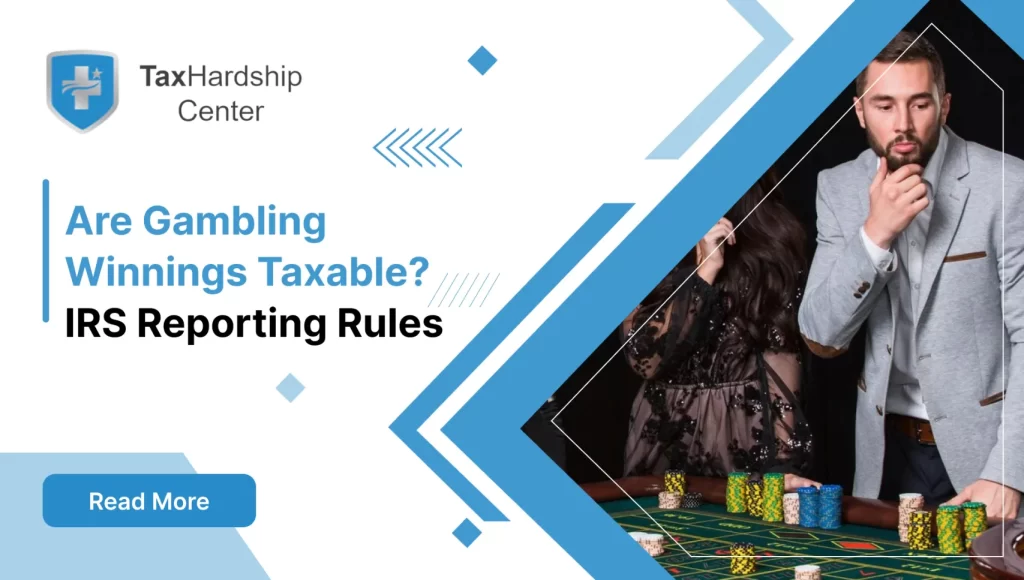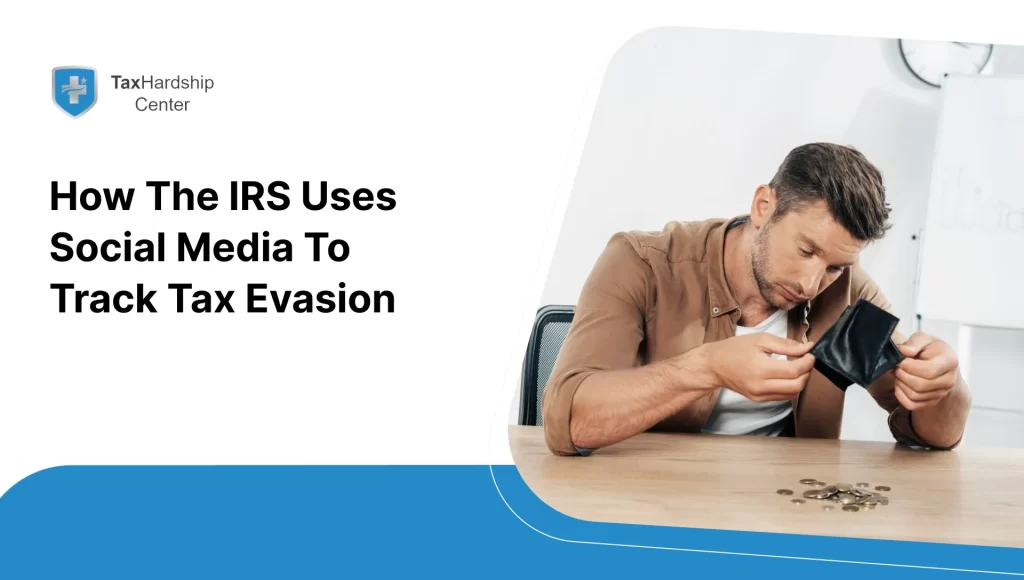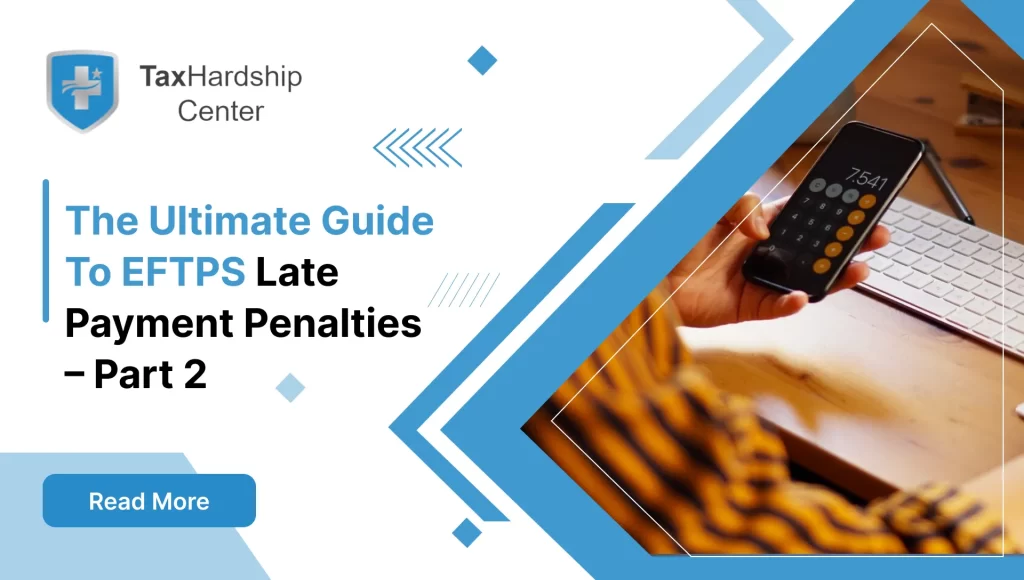Are you drowning in debt and unsure of how to regain control? Declaring bankruptcy might be a solution you’ve considered, but the process can seem daunting. This comprehensive guide to declaring bankruptcy will equip you with the knowledge to make informed decisions. We’ll explore the different types of bankruptcy, the benefits and drawbacks, and the steps involved in filing. Whether you’re just starting to consider bankruptcy or are ready to move forward, this guide will be your roadmap to financial relief.
What Is Bankruptcy?
Bankruptcy is a legal procedure that allows individuals or businesses unable to meet their financial obligations to obtain relief from their debts. The process is initiated by filing a petition in bankruptcy court, which can either be voluntary or enforced by creditors. The ultimate goal of declaring bankruptcy is to provide a fresh financial start while ensuring fair treatment of creditors.
Tax Hardship Center: Your Beacon of Hope in Times of Financial Distress
In the maze of bankruptcy and tax relief, the Tax Hardship Center emerges as a guiding light, delivering hassle-free assistance to those overburdened by tax woes. With a steadfast promise of a 14-day money-back guarantee, they stand firmly behind their seamless service. Offering a complimentary consultation, their team of consummate professionals is adept at navigating complex tax challenges with unmatched precision.
How Bankruptcy Works?
Bankruptcy is a legal mechanism that provides a lifeline to individuals and entities overwhelmed by debt. The process begins with the debtor filing a petition in a federal bankruptcy court. Filing the petition triggers an automatic stay, a mandatory injunction that stops creditors from pursuing debt collection actions against the debtor. The stay is designed to preserve the debtor’s remaining assets and provide a breathing space while the bankruptcy case is resolved.
During the bankruptcy process, the court appoints a trustee. The trustee’s role varies depending on the type of bankruptcy filed. Still, it typically involves reviewing the debtor’s finances, liquidating assets to pay creditors in a Chapter 7 filing, or helping to create a reorganization plan in Chapter 11 or Chapter 13. The trustee acts as an intermediary between the debtor and the creditors, ensuring that assets are pretty distributed or that repayment plans are feasible and followed.
What Are the Types of Bankruptcy Filings?
Bankruptcy filings in the United States are predominantly categorized under three chapters of the Bankruptcy Code: Chapter 7, Chapter 11, and Chapter 13. Each chapter is tailored to address the unique financial situations that debtors might face.
Chapter 7, also known as straight or liquidation bankruptcy, is typically for individuals with limited income and entails the trustee liquidating the debtor’s non-exempt assets to repay creditors. Chapter 11, known as reorganization bankruptcy, is mainly geared towards businesses, allowing them to remain operational while restructuring their debts. Lastly, Chapter 13, or wage earner’s insolvency, is for individuals with enough income to repay part of their debts through a repayment plan.
Chapter 7 Bankruptcy
Chapter 7 bankruptcy represents a path for debtors with limited disposable income who cannot service their debts, particularly unsecured ones like credit cards and medical bills. After filing a Chapter 7 bankruptcy, most of the debtor’s assets are deemed part of the bankruptcy estate, which the trustee can then liquidate. It is important to note that certain personal assets may be protected or exempt from liquidation, depending on state laws.
Upon completing a Chapter 7 bankruptcy, the debtor typically receives a discharge, releasing them from personal liability for most unsecured debts. However, some obligations, like certain taxes and student loans, cannot be discharged.
Chapter 11 Bankruptcy
Chapter 11 bankruptcy offers a reorganization plan for businesses and, in some cases, individuals with significant debts and assets. Under this chapter, the debtor, often called the debtor in possession, retains control of the business and its assets while undergoing reorganization. The debtor proposes a plan to restructure and pay off debts over time while continuing daily operations. This process can be complex, costly, and versatile, as it may include renegotiating terms with creditors, downsizing operations, or liquidating certain assets.
Chapter 13 Bankruptcy
Chapter 13 bankruptcy allows individuals with a regular income to keep their property and repay all or part of their debts over time through a court-approved repayment plan. This type of bankruptcy is suitable for debtors with a steady income who want to avoid home foreclosure or valuable asset repossession.
The repayment plan typically lasts three to five years and is structured based on the debtor’s income, allowable expenses, and debt types. Following the completion of the payment plan and confirmation by the court, the debtor is granted a discharge of most remaining unsecured debts.
Being Discharged From Bankruptcy
A discharge from bankruptcy is the ultimate goal for most debtors, as it legally frees them from personal liability for certain debts. The time it takes to receive a discharge varies by the type of bankruptcy filed: Chapter 7 discharges typically occur within a few months of filing, while Chapter 13 discharges occur after the repayment plan is completed.
Advantages and Disadvantages of Bankruptcy
The decision to declare bankruptcy is significant, with positive and negative outcomes. On the upside, bankruptcy can provide immense relief by legally discharging many types of debt, allowing individuals to reset their finances without insurmountable debt. The automatic stay put in place by the court upon filing prevents creditors from continuing with collection actions, foreclosures, or repossessions, offering a period of financial calm and stability to debtors during the proceedings.
However, the disadvantages are considerable. A bankruptcy will have a lasting impact on one’s credit report, typically remaining there for 7-10 years, depending on the type of bankruptcy filed. This can lead to a lower credit score and make it more challenging to secure credit, purchase a home, or sometimes even find employment. There is also the potential loss of property; in a Chapter 7 bankruptcy, certain assets may be liquidated to pay off creditors. Additionally, having a bankruptcy on record can limit your ability to file for bankruptcy again for several years should you encounter financial difficulties.
Weighing these pros and cons is vital before proceeding with a bankruptcy filing. Careful analysis of one’s financial situation and consultation with financial and legal professionals can help decide the best action.
Alternatives to Bankruptcy
Bankruptcy should be considered a last resort, as several other avenues might resolve financial troubles without the lasting impacts of bankruptcy. Debt consolidation is one option, which involves taking out a new loan to pay off several debts, simplifying payments into one monthly bill, often with a lower interest rate.
Credit counseling is another alternative, guiding finance professionals who can help create a budget and offer advice for managing debt. Many non-profit organizations offer credit counseling services at little or no cost.
Credit counseling agencies also typically facilitate a debt management plan. The plan involves negotiating with creditors to establish a more manageable repayment schedule. Lower interest rates and waived fees make it easier to pay down debts over time without filing for bankruptcy.
Before taking any action, it is advisable to thoroughly explore these alternatives to assess whether they offer a more favorable path to financial stability.
What Is the Downside of Filing for Bankruptcy?
The decision to file for bankruptcy comes with many potential drawbacks and should be considered only after all other options have been exhausted. The most immediate and noticeable downside is the significant dent in your credit score. This negative mark on your credit report can make lenders wary, leading to difficulties getting approved for credit cards, loans, or mortgages with favorable terms. In some cases, this can also affect your ability to find housing, as some landlords perform credit checks before leasing.
Depending on the chapter filed, bankruptcy may also lead to the loss of valuable assets. While exemptions exist to protect certain assets in bankruptcy, there is a risk that non-exempt property will be sold to pay creditors. Additionally, bankruptcy is a matter of public record, which could carry a personal and professional stigma.
The long-term financial implications of filing for bankruptcy can be severe and may influence future financial planning and opportunities. Therefore, it is crucial to be fully aware of these potential downsides and seek professional advice to carefully assess one’s financial situation before filing for bankruptcy.
How to file for bankruptcy?
Filing for bankruptcy is a multi-step process that involves careful preparation and a clear understanding of the legal proceedings. Here is a step-by-step guide on how to file for bankruptcy:
1. Assess Your Financial Situation:
Begin by collecting all your financial records, including debts, assets, income, and expenses. This will help you understand the severity of your financial situation and determine whether bankruptcy is the best course of action.
2. Credit Counseling:
Within 180 days before filing for bankruptcy, you must complete a credit counseling course from an approved agency. This session will evaluate your financial situation and discuss alternatives to bankruptcy. You will receive a certificate of completion, which you must file along with your bankruptcy paperwork.
3. Choose the Correct Type of Bankruptcy:
Decide whether Chapter 7 or Chapter 13 bankruptcy suits your situation. Chapter 7 is for those with little income who wish to discharge most unsecured debts. Chapter 13 is for individuals with a regular income who want to keep their property and pay debts over time.
4. Complete Bankruptcy Forms:
Fill out the necessary forms to complete your bankruptcy petition. These forms require detailed financial information, including debts, assets, income, expenses, and financial transactions. Be honest and thorough; inaccuracies can lead to your case being dismissed.
5. Filing the Petition:
Once your forms are completed, file them with the bankruptcy court in your jurisdiction. This officially starts your bankruptcy case. You must also pay a filing fee unless you receive a waiver or payment plan based on your financial circumstances.
6. The Automatic Stay:
Filing for bankruptcy invokes an automatic stay, immediately stopping most creditors from contacting you, garnishing your wages, or proceeding with lawsuits, foreclosures, or repossessions.
7. Trustee Appointment and 341 Meeting:
The court will appoint a bankruptcy trustee to oversee your case. You will then attend a meeting of creditors (341 sessions), where the trustee and any creditors can ask questions about your finances and the information in your petition.
8. Additional Steps for Chapter 13:
If you filed for Chapter 13 bankruptcy, you must propose a repayment plan, typically within 14 days of filing your petition. Your plan will detail how you intend to repay your debts over three to five years.
9. Meeting Requirements and Court Hearings:
Depending on your bankruptcy type, you may need to attend additional hearings or meet specific requirements, like a debtor education course for Chapter 7 filers or making payments according to your Chapter 13 plan.
10. Discharge:
After completing the process for Chapter 7, the court will discharge eligible debts, releasing you from personal liability for them. For Chapter 13, the discharge occurs after you complete the payment plan.
What Are The Costs Associated
The costs associated with filing for bankruptcy can vary based on several factors, including the type of bankruptcy you’re filing for, the complexity of your case, your geographical location, and whether you hire an attorney. The main costs are as follows:
1. Court Filing Fees:
– For Chapter 7 bankruptcy, the filing fee is typically around $335.
– For Chapter 13 bankruptcy, the filing fee is typically around $310.
These fees are mandatory, but if you cannot afford the filing fee, you may apply for a fee waiver (Chapter 7 only) or propose to pay the fee in installments.
2. Mandatory Credit Counseling and Debtor Education Courses:
– The cost for the required credit counseling and debtor education courses can range from $20 to $100 each, though fees can be waived or reduced based on your income level.
3. Attorney Fees:
– Attorney fees can vary widely. For Chapter 7, fees range from $500 to $3,500, depending on the case’s complexity and the country’s region.
-Chapter 13 fees can range from $2,500 to $6,000. Some courts have set guideline fees that attorneys may charge for a primary Chapter 13 case.
4. Additional Costs:
– If you need assistance from a bankruptcy petition preparer, you can expect to pay a few hundred dollars for this service.
– There may be additional fees for obtaining copies of your credit report, which can be around $30 to $50.
– If the trustee in your case requires appraisals or auctions of your property, there may be additional costs for those services.
– There may be extra fees if you need to amend your filings or make special appearances.
– In Chapter 13 cases, the trustee may charge an administration fee, typically a percentage of the total payments made through your repayment plan, which could be between 3% to 10%.
Is Bankruptcy a Good Choice?
One must weigh their financial circumstances against the potential repercussions when pondering whether to declare bankruptcy. This decision should be made with time, as it will likely affect one’s credit, self-perception, and future borrowing potential. Bankruptcy can offer a reprieve for those drowning in debt, ending creditor harassment and providing a clear path to start anew. However, it’s a serious step that can severely impact one’s credit score, remain on one’s credit report for up to 10 years, and possibly influence one’s reputation.
Before filing, exploring other debt relief strategies, such as debt settlement, negotiation with creditors, or credit counseling, is imperative. These alternatives may provide a less drastic solution to financial woes. It’s also crucial to consider long-term objectives. For instance, if you’re planning significant life changes like purchasing a home or starting a business, the implications of bankruptcy could complicate or delay these plans.
Only after thoroughly analyzing your debt levels, asset holdings, and both the short-term relief and long-term consequences of bankruptcy should you conclude whether this path aligns with your financial recovery goals.
Do You Get Out of All Your Debits if You File for Bankruptcy?
A common misconception about bankruptcy is that it eliminates all debts. However, the truth is more nuanced. Bankruptcy can discharge many unsecured debts, such as credit card balances, medical bills, and unsecured personal loans. Yet, certain obligations are typically immune from discharge. These nondischargeable debts include, but are not limited to, student loans (except in rare cases of demonstrated undue hardship), alimony, child support, and specific tax debts.
Additionally, secured debts, like car loans and mortgages, have an attached collateral that creditors can still claim if payments are not made. During bankruptcy proceedings, it is crucial to understand which debts will be erased and which you will continue to be responsible for. Liquidation or reorganization plans may address these obligations differently, so knowing the distinction between dischargeable and nondischargeable debts and how they’re handled is essential in evaluating the effectiveness of bankruptcy for your financial situation.
Conclusion:
Navigating the complexities of bankruptcy requires a thorough understanding of its intricacies, implications, and alternatives. From understanding the different types of bankruptcy filings to weighing the advantages and disadvantages, individuals facing financial distress must make informed decisions. While bankruptcy relieves overwhelming debt burdens, it has lasting implications that affect credit scores, economic stability, and future opportunities. Exploring alternatives and consulting with financial and legal professionals are essential to determine the best action for achieving long-term financial health.
Why Tax Hardship Center?
1. Hassle-Free Assistance:
Say goodbye to sleepless nights and endless tax-related stress. At the Tax Hardship Center, we believe in simplifying the complex. Our team of experts is dedicated to guiding you through every step of the process, ensuring that your tax concerns are met with precision and care.
2. 14-Day Money Back Guarantee:
We’re so confident in our ability to ease your tax worries that we offer a 14-day money-back guarantee. If, for any reason, you’re not satisfied with our service, we’ll gladly refund your investment. Your peace of mind is our top priority!
3. Free Consultation:
Are you curious about how we can transform your tax experience? Book a free consultation now! Our team will assess your situation, answer your questions, and provide free insights tailored to your needs.
4. Nationwide Coverage:
No matter which corner of the United States you call home, the Tax Hardship Center covers you. We proudly serve all 50 states, bringing our expertise to your doorstep. Wherever you are, our commitment to excellence follows.
FAQs (Frequently Asked Questions):
1. What are the costs associated with filing for bankruptcy?
The costs of filing for bankruptcy vary depending on factors such as the type of bankruptcy, case complexity, geographical location, and legal representation. Main costs include court filing fees, mandatory credit counseling and debtor education course fees, attorney fees, and additional expenses like bankruptcy petition preparer fees and trustee administration fees.
2. Is bankruptcy a good choice?
Deciding whether to declare bankruptcy requires careful consideration of one’s financial circumstances and the potential repercussions. While bankruptcy offers relief from overwhelming debt and creditor harassment, it can significantly impact credit scores, remain on credit reports for up to 10 years, and affect future borrowing potential. Exploring alternative debt relief strategies and considering long-term objectives are crucial before concluding whether bankruptcy aligns with one’s financial recovery goals.
3. Do you get out of all your debts if you file for bankruptcy?
Bankruptcy can discharge many unsecured debts, such as credit card balances and medical bills. Still, certain obligations are typically immune from discharge, including student loans, alimony, child support, and specific tax debts. Additionally, secured debts have collateral creditors can still claim if payments are not made. Understanding which debts will be erased and which will remain one’s responsibility is essential in evaluating the effectiveness of bankruptcy for individual financial situations.








